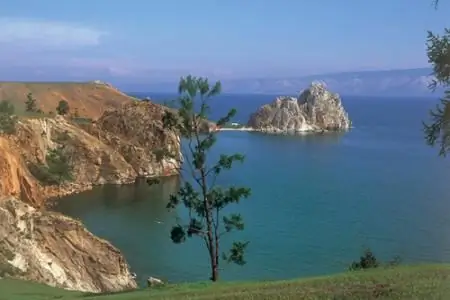- Author Harold Hamphrey [email protected].
- Public 2023-12-17 10:06.
- Last modified 2025-01-24 11:10.
Gobi is the largest and most majestic desert in Asia. It is located in the southern part of Mongolia and occupies a vast territory within China. Although everyone calls the Gobi a desert, this is not entirely correct. Up to 300 millimeters of precipitation falls annually in this area, which is completely atypical for deserts. Even in Kyzylkum and Karakum, located in the neighborhood, it falls one and a half times less. In addition, the Gobi desert is characterized by very severe winters.
On the territory occupied by the Gobi, the desert is by no means the only landscape. No wonder the Mongols say that they have 33 Gobi and all are different in appearance and climate. This is the boundless steppe with a huge number of colorful tulips and tall grasses, and sagebrush dry steppes with stony soil, and semi-deserts with dried up rivers and rare wells. The deserts of Asia are so mysterious and mysterious, their appearance attracts travelers like a magnet.

There are several Gobi: Dzungarian, Eastern, Gashun, Gobi Altai. All of them have completely different terrain. S alt and fresh lakes, sands and tall grasses, flat plains andmountain ranges, s alt marshes and fast rivers with clean clear water. In the steppes of the Eastern Gobi, you can see the cones of volcanoes that erupted lava as far back as the 6th century.
To see the real desert, you need to go to the west or south of the Eastern Gobi. Here the landscape consists of hills and low mountains. In this area, only the sun and wind reign. There are almost no cloudy days. During the summer day the temperature reaches 45°C, while in winter it can drop to -30°C. There are no barriers to the wind in the steppe, so it develops a breakneck speed.

The Gobi Desert is sometimes too dangerous for itinerant travelers and trade caravans, because sandstorms are not uncommon here. A hurricane lifts everything in its path into the air, billions of small grains of sand blind and do not allow you to breathe normally. Animals turn their backs to the wind in order to somehow stay in place. A hurricane rips roofs off houses, carries away small objects 20 km away (light yurts were sometimes found 5 km away), tents are torn to shreds. In autumn, heavy rain with hail can still be added to the hurricane wind, which can kill even a goat or a ram, because hailstones reach the size of a chicken egg.

In just a week of raging storm, hard grains of sand turn into transparent glass. The tops of the rocks and ridges are perfectly polished, so they create an amazingly picturesque picture. The Gobi Desert is most beautiful in the early morning, when the sun is just waking up, timidly sending its rays onto the sand that has cooled overnight. Only at this time canenjoy clean and fresh air, soak up the sun without fear of getting burned. It will only take a couple of hours, and the picture will change dramatically. The desert will turn into a hot place again.
Today, the Gobi desert remains an amazingly beautiful and mysterious place on the planet. Paleontologists conduct their excavations here, because it is in this area that the famous cemetery of dinosaurs is located. It will take more than one decade, and maybe even a century, before a person learns all the secrets that the impregnable Gobi keeps in itself.






